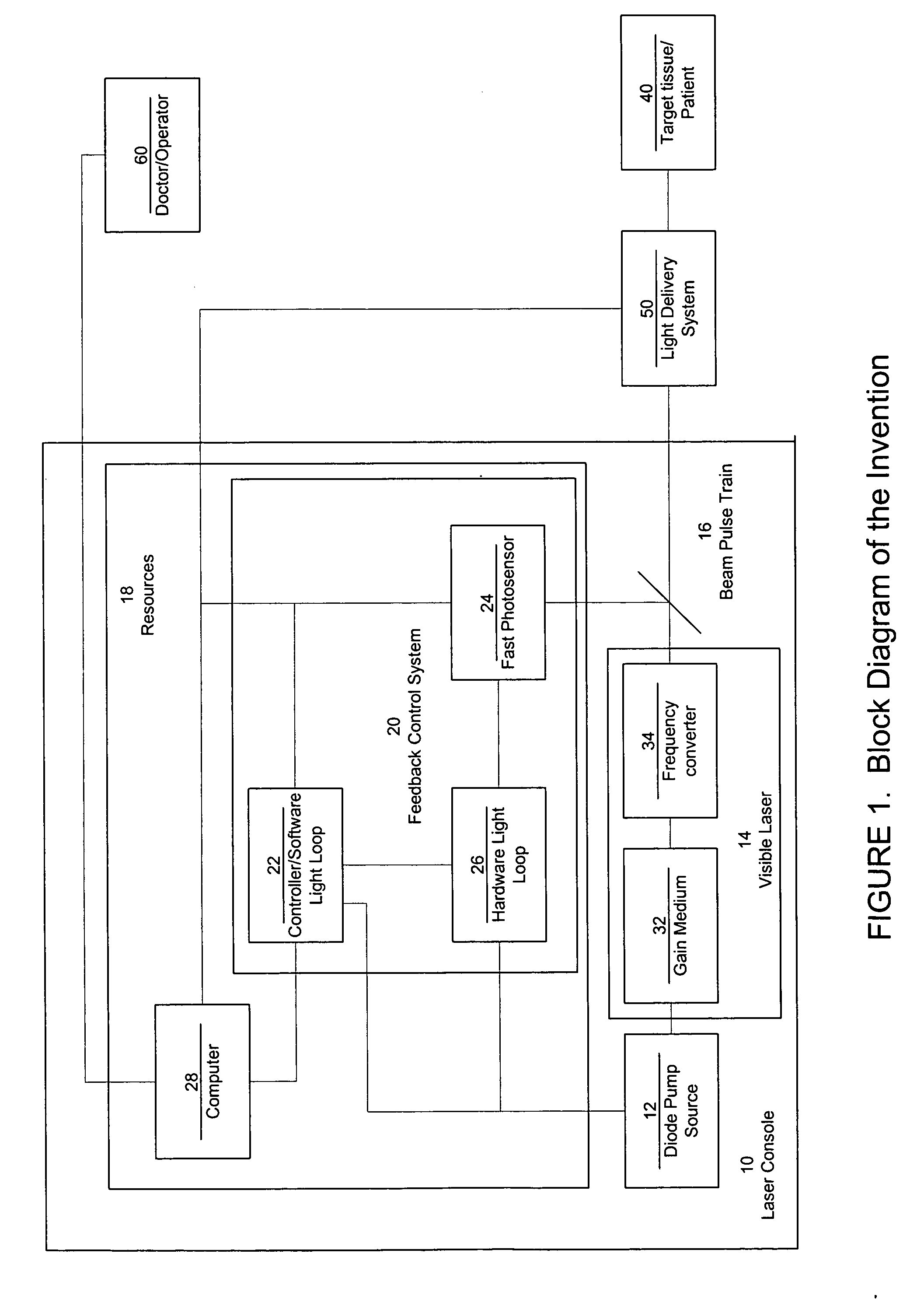Laser system with short pulse characteristics and its methods of use
a laser system and short pulse technology, applied in the field of laser systems, can solve the problems of thermal damage laterally and axially into the clear layer in addition to the pigmented layer, local mechanical damage in addition to thermal damage to adjacent tissues, and achieve the effect of conciliating thermal effects
- Summary
- Abstract
- Description
- Claims
- Application Information
AI Technical Summary
Benefits of technology
Problems solved by technology
Method used
Image
Examples
example 1
[0040] In this example, the resources 18 have a hardware light loop threshold set at 3 to 5% above the desired power level. At the start of each pulse, the requested light level is set to maximum and held there until the laser power reaches the desired level. This generates the fastest possible rise time. When the laser power reaches the desired level, the resources 18 hold the power just above the desired level. The resources 18 then ramps the requested power level down until the laser power is equal to or below the desired level. If it is equal to or below the desired level, it steps back up slowly. If it is above, it steps down slowly. The resources 18 make a new measurement before each decision to raise or lower the requested level.
[0041] At this point the resources 18 requested level is close to the proper level and the combination of hardware and software keep the light within 3 to 5% as long as the pulse is on. The end result is a very fast turn on and stable light level thr...
example 2
[0042] In this example, laser system 10 is utilized to treat RPE, capullochoris and choroids of the eye. Pulsed output 16 is directed to target site 40 of the eye and a temperature rise at the target site is non-additive from pulse to pulse. The target site 40 is an area of 50 microns to 3 mm. The pulsed output 16 has a wavelength range of 520 to 615 nm. The pulsed output 16 has a pulse on time of 25 microseconds to 10,000 microseconds, and a pulse off time of 750 to 10,000 microseconds.
example 3
[0043] In this example, laser system 10 is utilized to treat RPE, capullochoris and choroids of the eye. The pulsed output 16 is directed to a target site of the eye and a temperature rise at the target site is non-additive from pulse to pulse. The target site 40 is an area of 50 microns to 3 mm. The controller 22 has a high speed circuit that compares a signal from the photodetector 24, to a target power, and uses this comparison to determine the on and off time of each pulse. The signal from photodetector 24 is compared to a target power to determine the on and off times.
[0044] The pulsed output 16 has a wavelength range of 520 to 615 nm. The pulsed output 16 has a pulse on time of 25 microseconds to 10,000 microseconds, and a pulse off time of 750 to 10,000 microseconds.
PUM
 Login to View More
Login to View More Abstract
Description
Claims
Application Information
 Login to View More
Login to View More - R&D
- Intellectual Property
- Life Sciences
- Materials
- Tech Scout
- Unparalleled Data Quality
- Higher Quality Content
- 60% Fewer Hallucinations
Browse by: Latest US Patents, China's latest patents, Technical Efficacy Thesaurus, Application Domain, Technology Topic, Popular Technical Reports.
© 2025 PatSnap. All rights reserved.Legal|Privacy policy|Modern Slavery Act Transparency Statement|Sitemap|About US| Contact US: help@patsnap.com


